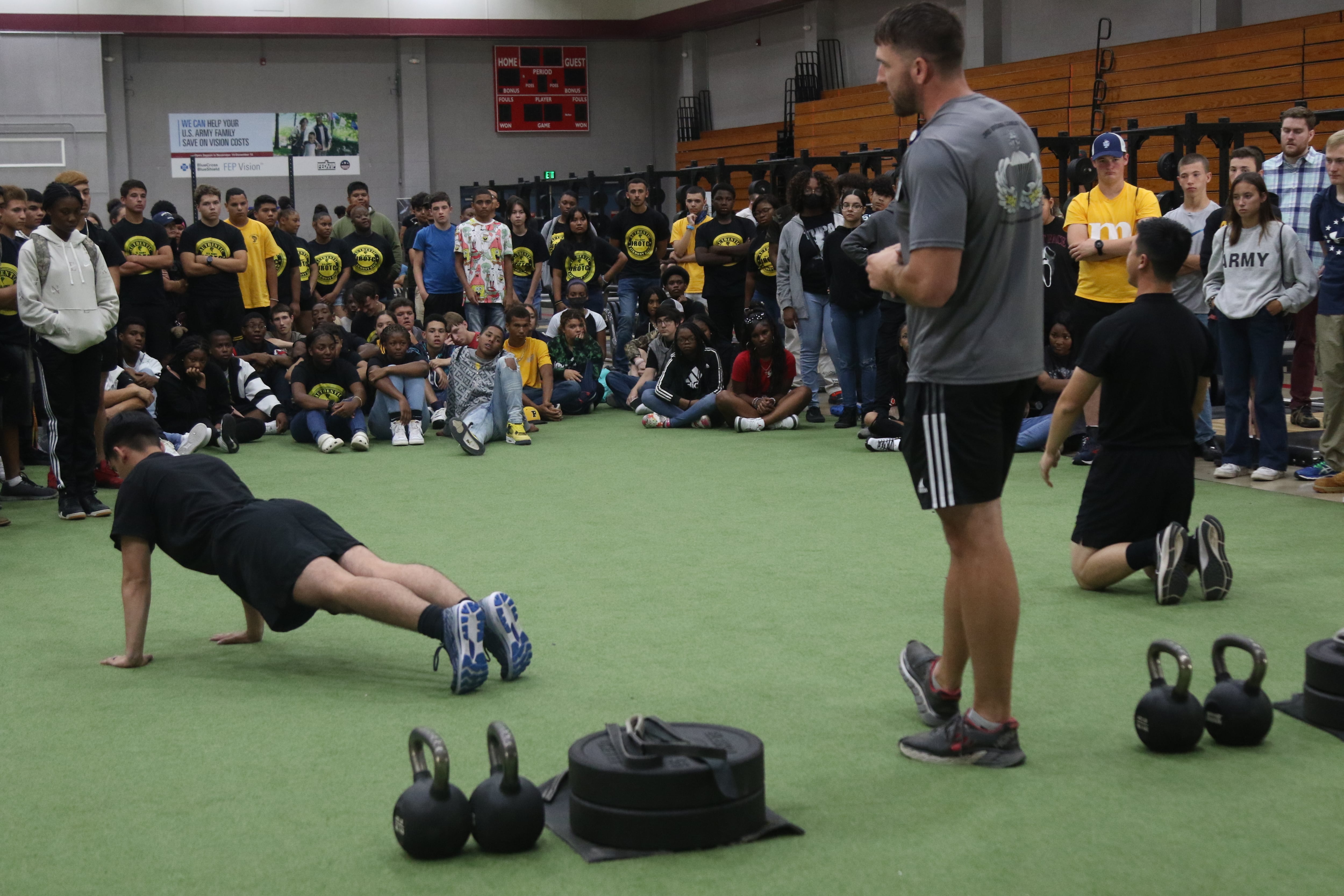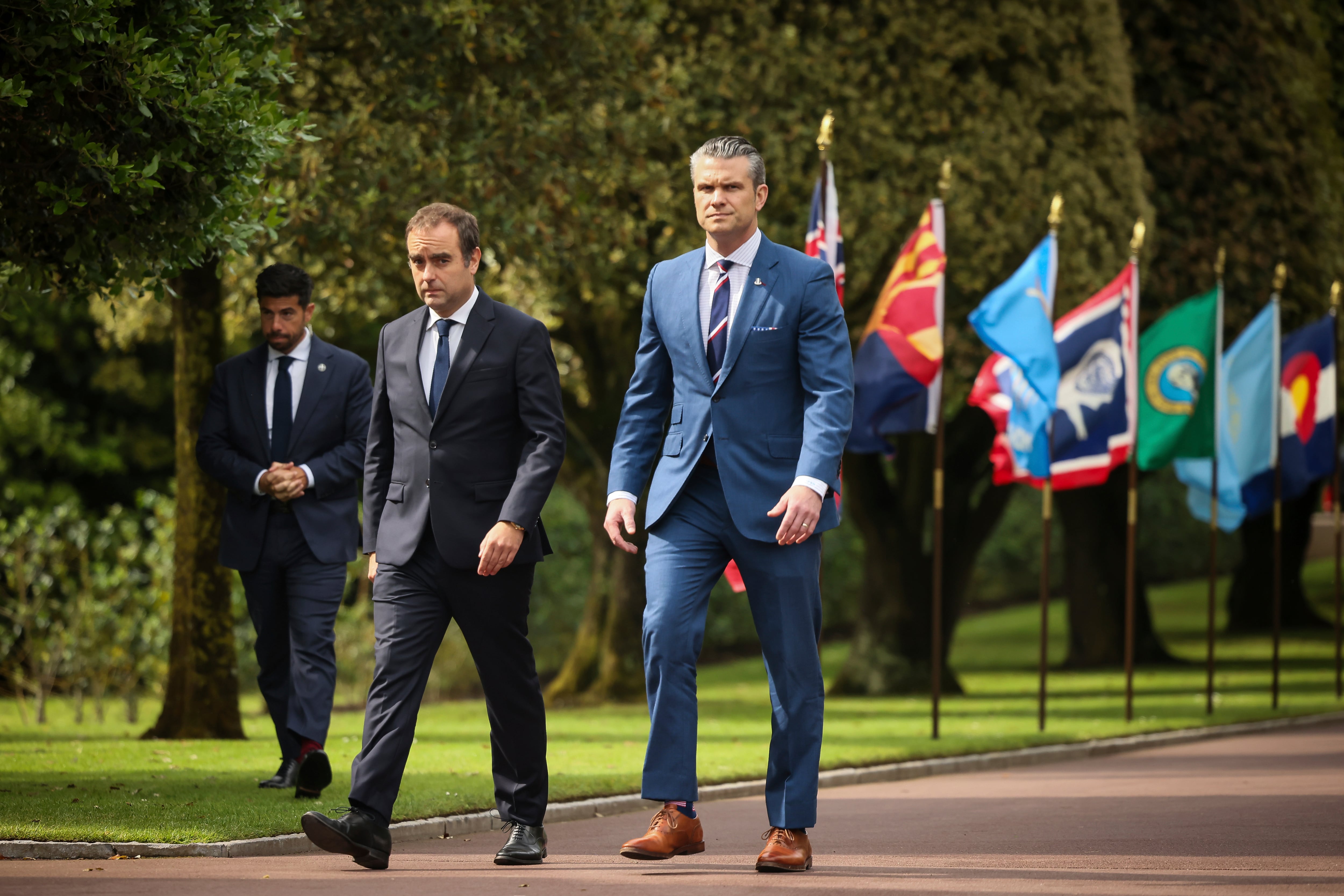Pushups, deadlifts, plank, 2-mile run: These exercises and more are part of how the Army assesses a soldier’s fitness. But a new holistic approach goes deeper.
And a dedicated area at the Association of the U.S. Army’s annual conference focuses solely on the various ways soldiers can attain, maintain and improve all-around fitness.
For the first time in the expo’s recent history, an entire pavilion is dedicated to human performance: everything from physical fitness to mental well-being to nutrition, spiritual fitness and sleep.
The pavilion will host Army leaders talking about how they’re applying the principles of Holistic Health and Fitness, or H2F, and will also feature health industry members, including BeaverFit USA and Polar USA.
And there’s a chance to sweat. The pavilion will feature early morning workouts each day of AUSA, which runs Oct. 10-12.
The companies in attendance will showcase goods and services, such as software applications, digital devices and training support methodologies to bring professional athlete-level tools to the Army’s newest private.
The Army fielded performance coaches and equipment to all 28 Forces Command brigades over the past two years, said Col. Kevin Bigelman, H2F director. He added that the service aims to deliver resources next year to at least 10 brigades — five in the 101st Airborne Division; two at Fort Jackson, South Carolina, training units; and three at training units on Fort Benning, Georgia.

The pavilion will give unit leaders from captain and above new tools and methods as well as the chance to hear from senior Army leaders who have used the H2F program, Bigelman said.
BeaverFit USA was the primary coordinator for the industry side of the event. The company provides exercise equipment and services for the Army’s ACFT program under a government contract.
“It’s a fully interactive training floor specifically designed for that lieutenant colonel or colonel; they’re the ones tasked with implementing [H2F],” Alex Roodhouse, a co-founder of BeaverFit who served in the Navy’s Riverine program, told Army Times ahead of the conference. (The Riverine program uses screened sailors who must pass rigorous physical fitness tests to run small boat operations in support of the Navy’s special warfare programs, such as the Navy SEALs.)
The idea, Roodhouse said, is to have the pavilion as both an information-sharing feature and a problem solver for unit leaders on any level to see what’s available.
More than two dozen vendors are expected to be at the pavilion featuring exercise equipment, nutrition and supplement products, training services, digital devices, and more.
Dan Browne serves as a lieutenant colonel in the Oregon Army National Guard, and he formerly served with the Army’s World Class Athlete Program training Army Olympic athletes. He earned his own PT stripes competing in the 2004 Olympic Games in the 10,000-meter and marathon events. His day job is working as a sales manager for Polar USA, which makes high-tech watches, heart rate monitors and other fitness equipment.
As a top-level athlete, performance coach and unit commander, Browne has specific insight into soldier performance and long-term development that goes beyond a sergeant yelling at someone to run faster. “It’s the idea of being able to teach somebody to fish — it’s much more powerful than giving them that fish,” Browne said.
Having spent decades in the Army, Browne was encouraged when H2F rolled out. The pavilion adds more evidence to a shift in the Army’s thinking about soldier health. “It tells me it’s a priority, and that to me is very powerful and exciting.”
As a runner, he said, numbers matter and data can yield insights that are unavailable by feel, especially for continued improvement. “The power of this wearable technology is it has the ability to give you continual feedback, continual assessment — not just once or twice a year,” he added.
Those tools could help as the Army marches toward its goal of 110 fully resourced brigades by 2030. And for those brigades that haven’t yet received their teams or equipment, there’s no need to wait: The principles of the program are in Field Manual 7-22, Bigelman said.
“If you’re at an installation [that] does not have H2F,” Bigelman said, “in the interim you can tap into Army wellness centers and [morale, welfare and recreation] gymnasiums, and ready resilient performance centers and medical treatment teams.”
Todd South has written about crime, courts, government and the military for multiple publications since 2004 and was named a 2014 Pulitzer finalist for a co-written project on witness intimidation. Todd is a Marine veteran of the Iraq War.










